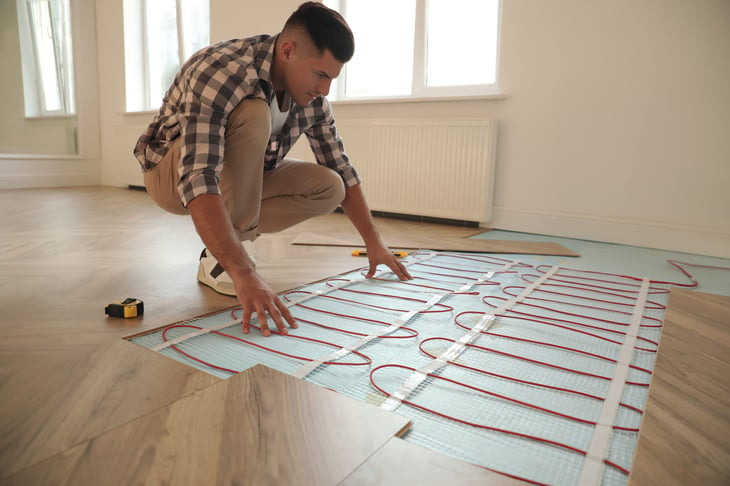
Editor's Note: This story originally appeared on Point2.
Heated flooring can be an absolute comfort, especially when stepping out of the shower on a cold day.
Beyond the warm, fuzzy feeling you can get from in-floor heating, there are several other advantages to enjoy.
However, every coin has its flipside. So, if you’re considering installing radiant floor heating in your home, it’s essential to make an informed decision.
With that in mind, let’s look at what types of floor heating systems are available, how they work, and their various pros and cons.
How Does a Radiant Floor Heating System Work?

In a nutshell, in-floor heating systems work by transferring heat from the system to the cooler surface of the floor.
As heat rises, the warmth is distributed evenly throughout the room, leaving no cool spots.
Meanwhile, conventional heating systems, which generally radiate heat into a room from a unit mounted on the wall, can leave the floor feeling cold — not ideal in a bathroom, for instance.
Different Types of Floor Heating Systems

There are two main types of radiant floor heating systems: hydronic (also known as water systems) and electric systems.
They both perform the same function; heating a room from the ground up, but use different power systems to carry out the task.
Hydronic Heated Floors
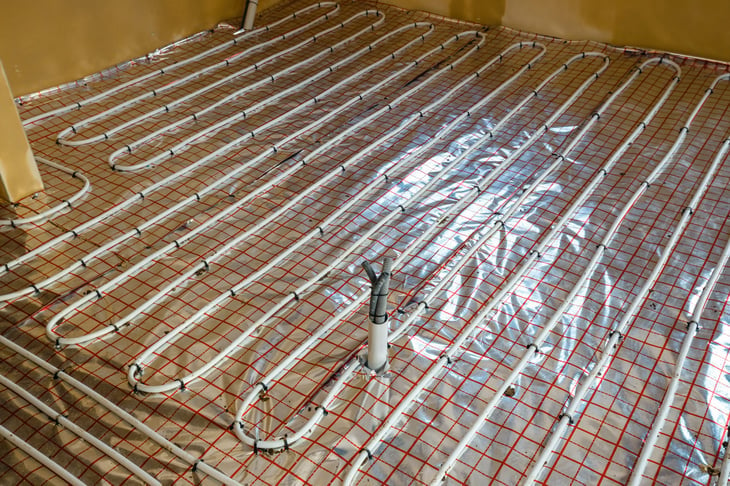
Water systems work much like a traditional central heating/boiler system. Instead of being mounted to a wall, the pipes are installed within or under the floor finish.
When switched on, hot water is circulated throughout the pipes, transferring the heat from the water in the pipes to the colder floor surface.
Generally speaking, the installation of a hydronic system is rather disruptive and takes longer than its electric counterpart. As such, it’s usually more expensive to install.
However, the running costs tend to be lower and can offset the initial cost over time. Hydronic heated floors aren’t ideal for retrofitting existing homes and are better suited to new buildings.
Electric Heated Floors
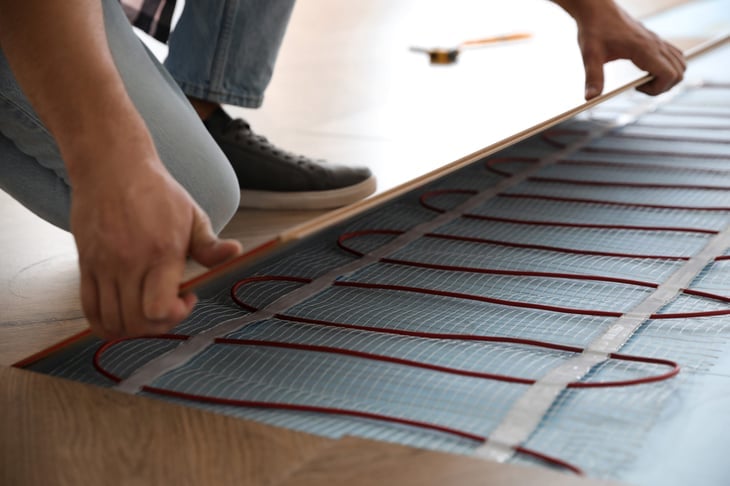
Instead of water-filled pipes, an electric radiant floor heating system uses a series of heating wires or pads to provide heat.
They tend to be much quicker and easier to install than water systems, making them ideal for retrofitting an existing home.
Indeed, some modern options simply plug in and are good to go, with installation taking as little as 30 minutes.
Electric heated floors cost much less to install than hydronic systems, but the running costs tend to be higher. However, compared to water systems, they require far less maintenance.
The Benefits of Heated Floors

Whether you opt for an electric or hydronic heated floor system, both offer the same fantastic benefits.
1. An Energy-Efficient Alternative

Since they heat to a lower temperature than traditional heating systems, heated floors can reduce energy consumption by around 20% to 25% on average.
With a good level of insulation, these figures can be much higher.
A traditional radiator will heat the water to around 160 degrees Fahrenheit, compared with the 84 degrees that a water floor heating system needs.
Meanwhile, an electric system generally gets to temperature faster, saving even more energy.
Plus, modern options can be hooked up to smart thermostats that enable different areas to be heated to different temperatures simultaneously.
2. More Affordable

Both water- and electric-heated floors cost less to run than traditional systems. The reduced energy consumption translates to lower energy bills each month.
Bear in mind that you will probably see a slight increase in your electricity bills when you install an electric system, but your heating bills will be slashed.
3. Very Low Maintenance

Once installed, most floor heating systems will need very little maintenance.
In fact, many systems can be left to do their thing for years. You can typically expect at least a 25-year warranty with most floor heating systems.
4. Increased Comfort

Heating from the ground up ensures that the heat is evenly distributed throughout the room, and cold spots are a thing of the past.
Not only that, but since you’ll always have contact with the floor, the heat is transferred directly to your body.
So, even if the air around you is cooler, you’ll still benefit from the heat produced by floor heating.
5. Improved Air Quality

Traditional radiators circulate air around the home, disrupting dust and allergens. However, this is no longer an issue with floor heating, which radiates naturally upwards.
6. Easy to Install
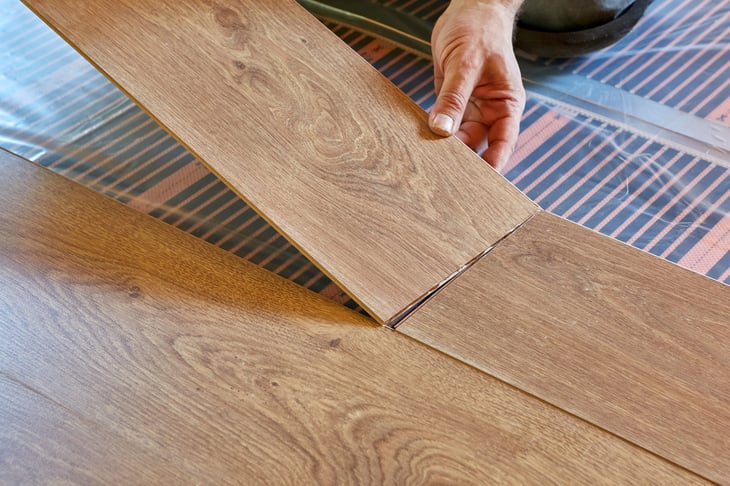
While hydronic systems may be a bit challenging to install, most modern electric floor heating systems are incredibly easy to set up.
A confident DIYer shouldn’t have any problems, reducing installation costs drastically.
7. You Gain More Space
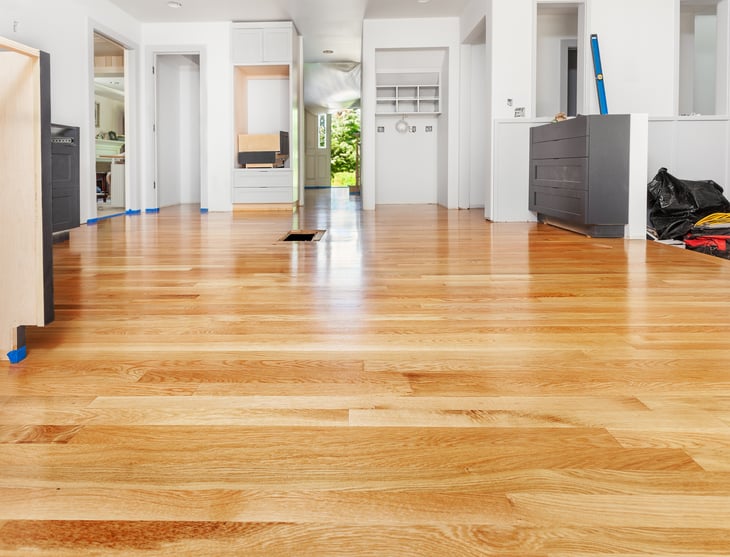
Once you install floor heating, you can remove your bulky radiators, giving you much more space in your rooms.
You’d be surprised at how much space you gain when you don’t have to fit furniture around the radiators and can put things tight to the walls.
The Downsides of Floor Heating

While there are plenty of things to love about floor heating, nothing is perfect, and it’s essential to know both sides of the story before you install anything in your home:
1. Costly to Install

Installing floor heating tends to be more expensive than installing a traditional system.
On average, you can expect an electric system to cost around $8 to $12 per square foot, while a water system will typically be upwards of $20 per square foot.
While you may be able to save on installation costs with an electric system, you’ll almost certainly have to hire professionals for a water system, which can cost several hundred dollars on top of the system itself.
2. You’ll Need to Re-Do Your Floors
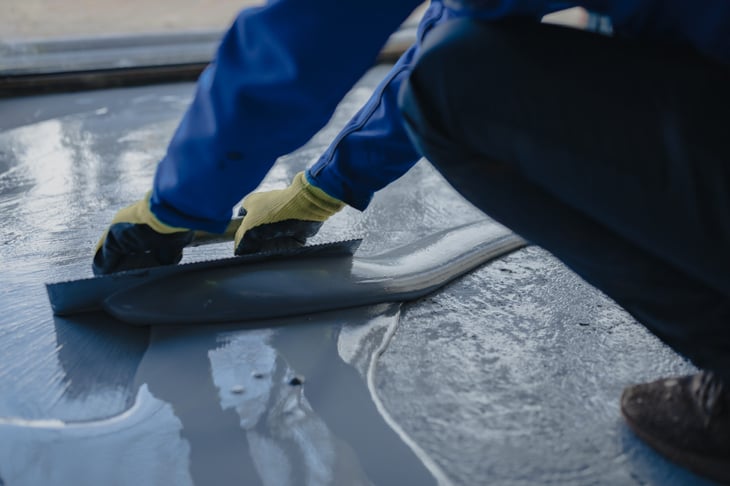
When you install underfloor heating, you’ll have to take up the old floor, install the system, and then replace the finish.
This means a lot of disruption as you empty the room, and things can get really messy if you need to remove concrete.
As such, floor heating systems, especially hydronic ones, are best suited to new buildings or large-scale renovations.
It’s also worth bearing in mind that installing underfloor heating will typically raise the height of the floor. As a result, you may need to trim your doors to ensure they still open fully.
3. May Not Be Able To Operate as Your Main Heating Source

Floor heating isn’t always powerful enough to act as the primary heat source in some homes.
If your insulation isn’t up to scratch, for example, underfloor heating may not be capable of warming your home suitably in winter.
4. Not Suitable for All Floor Finishes
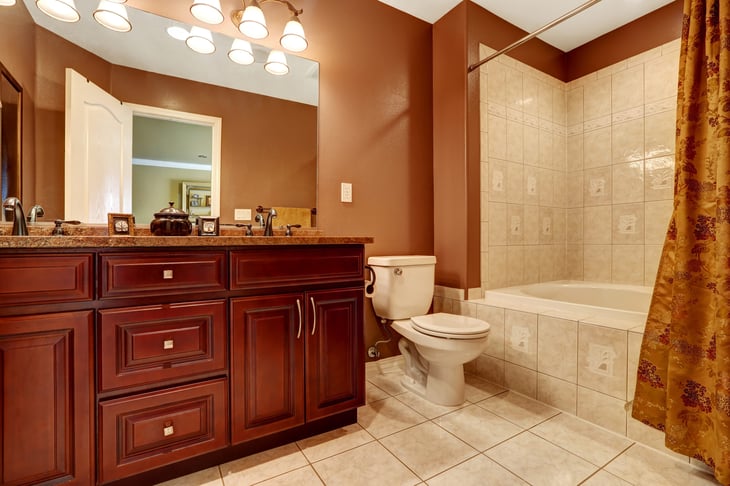
Most floor heating systems are designed to work best with solid floor finishes such as tiles or hardwood.
While some systems are built to work with carpet and laminate flooring, they’re not always as efficient.





Add a Comment
Our Policy: We welcome relevant and respectful comments in order to foster healthy and informative discussions. All other comments may be removed. Comments with links are automatically held for moderation.